



- Cotton – A soft, breathable, and natural fiber, widely used in everyday clothing.
- Silk – A luxurious, smooth, and shiny fabric, often used for formal wear and evening gowns.
- Wool – A warm, insulating fiber, typically used for sweaters, coats, and suits.
- Linen – A lightweight and breathable fabric made from flax, perfect for summer wear.
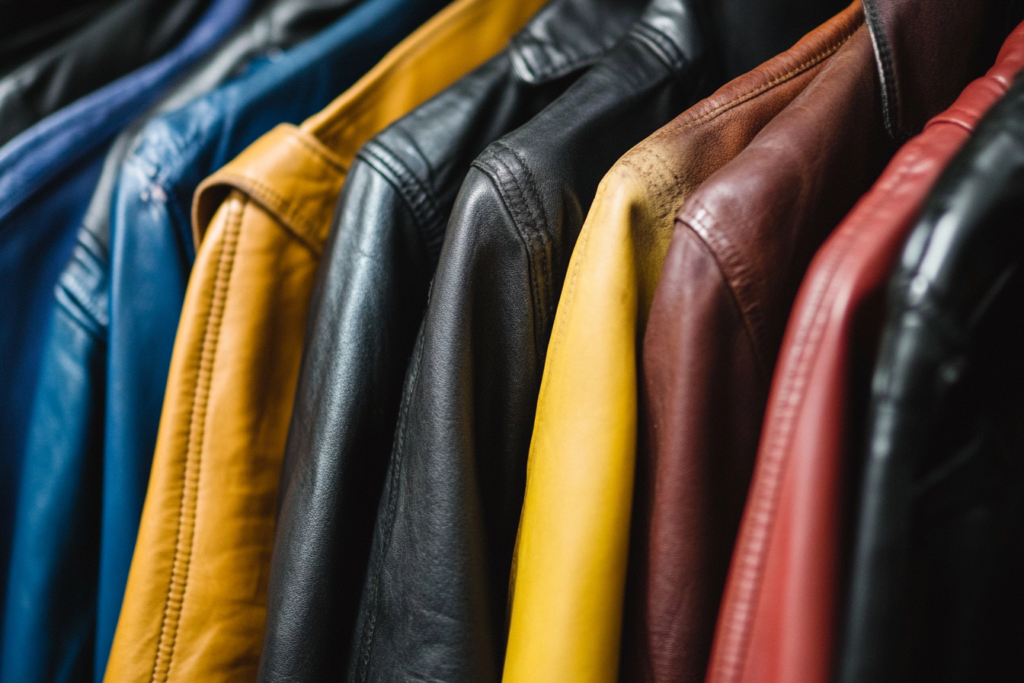

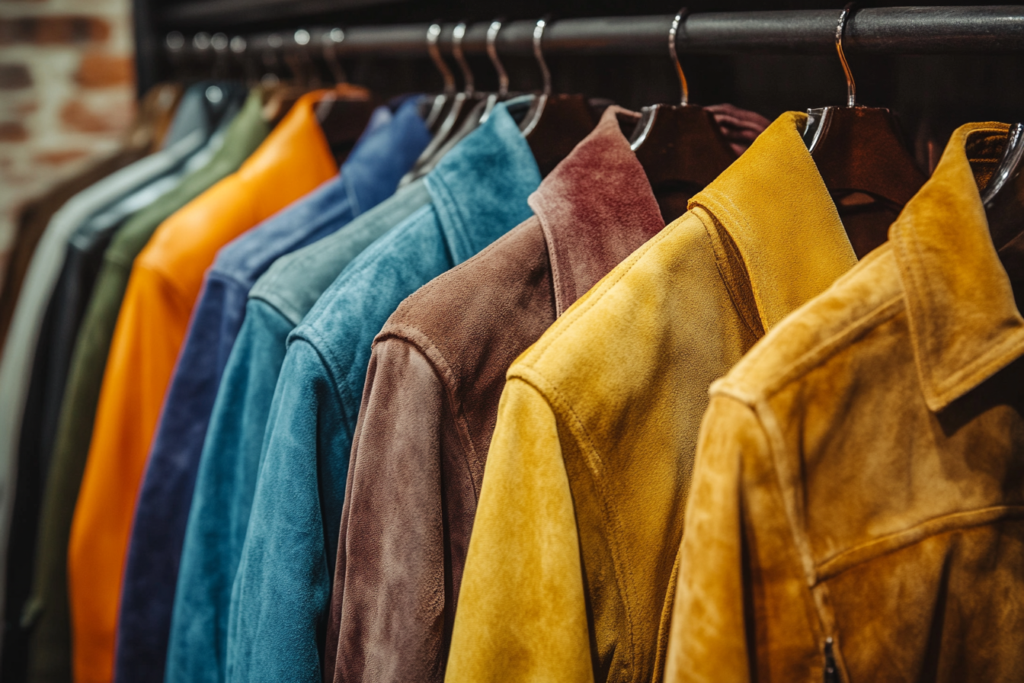
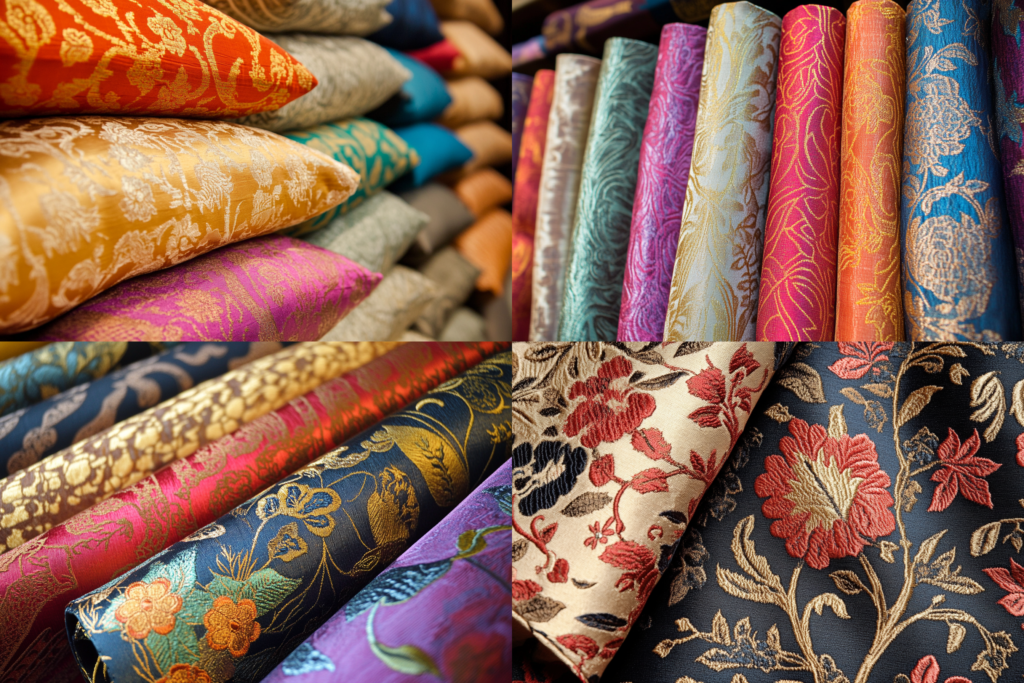
- Leather – A durable and flexible material often used for jackets, shoes, and accessories.
- Fleece – A soft, warm synthetic fabric used for outerwear and loungewear.
- Suede – A type of leather with a soft, velvety surface, used for jackets, shoes, and bags.
- Brocade – A rich, decorative fabric with intricate patterns, often used in formalwear and upholstery.
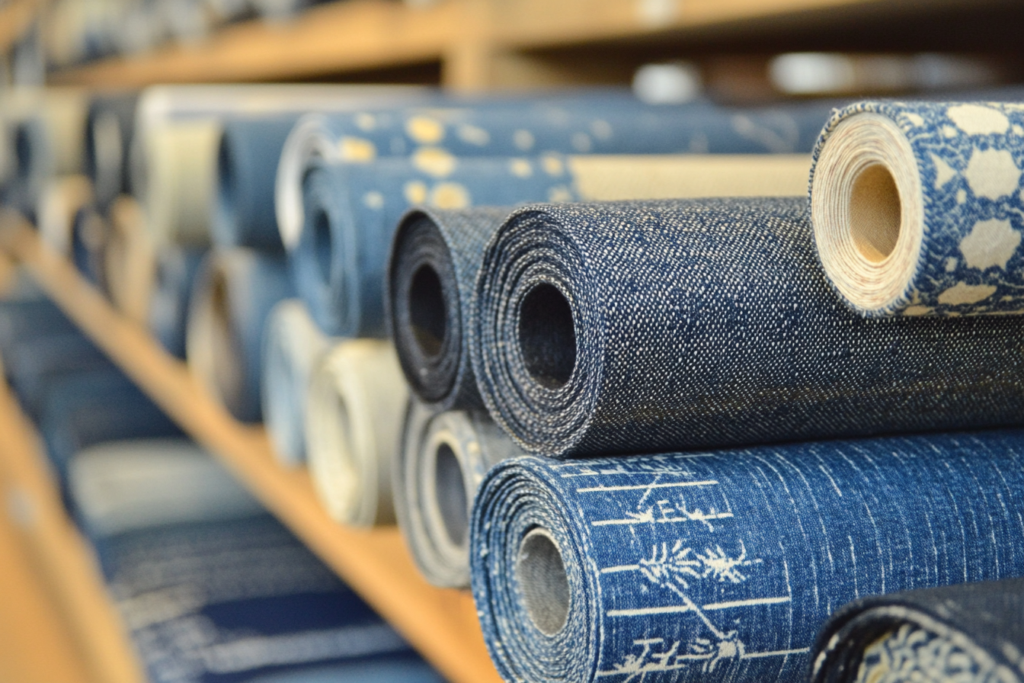

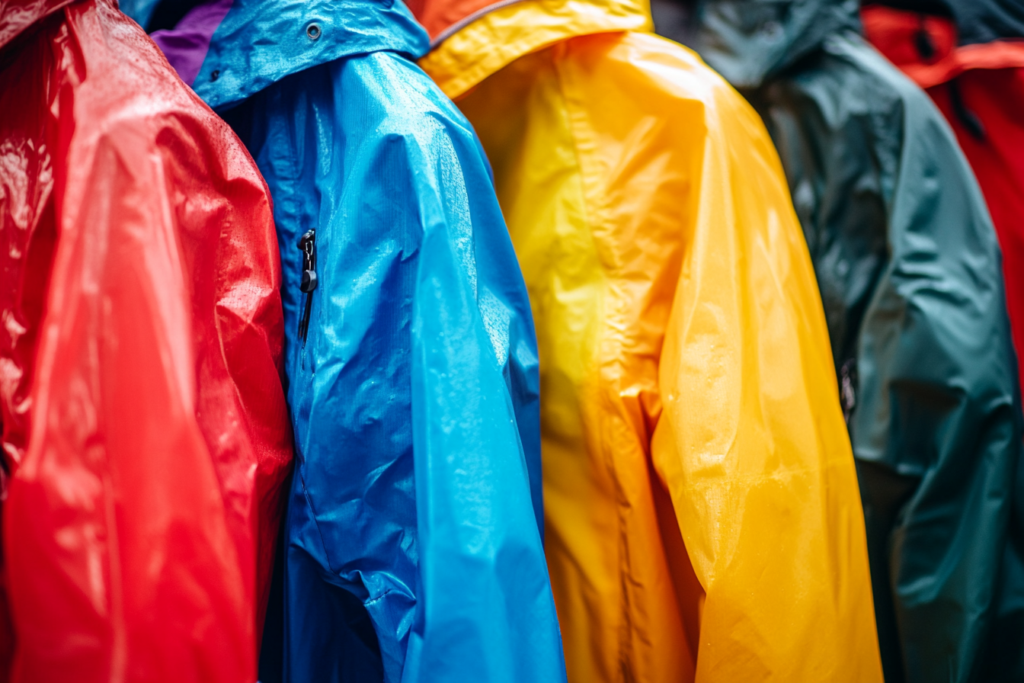
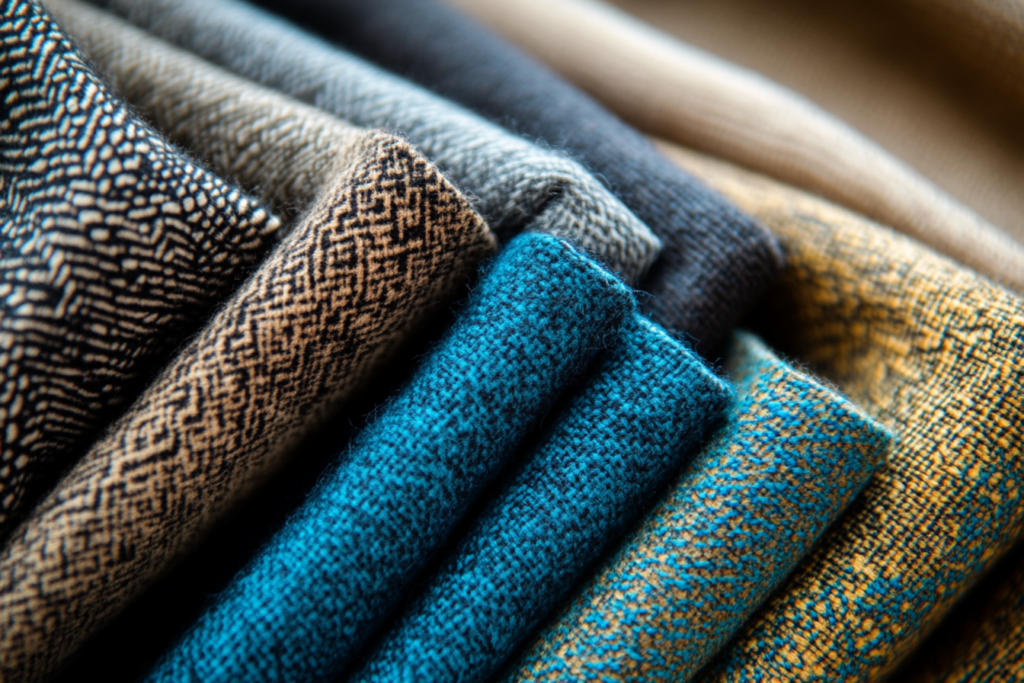
- Denim – A thick, woven cotton fabric, commonly used for jeans and casual wear.
- Velvet – A soft, plush fabric with a rich texture, often used in evening wear and upholstery.
- Nylon – A synthetic fabric known for its strength and durability, used in outerwear and activewear.
- Polyester – A widely used synthetic fiber, known for being wrinkle-resistant and durable.

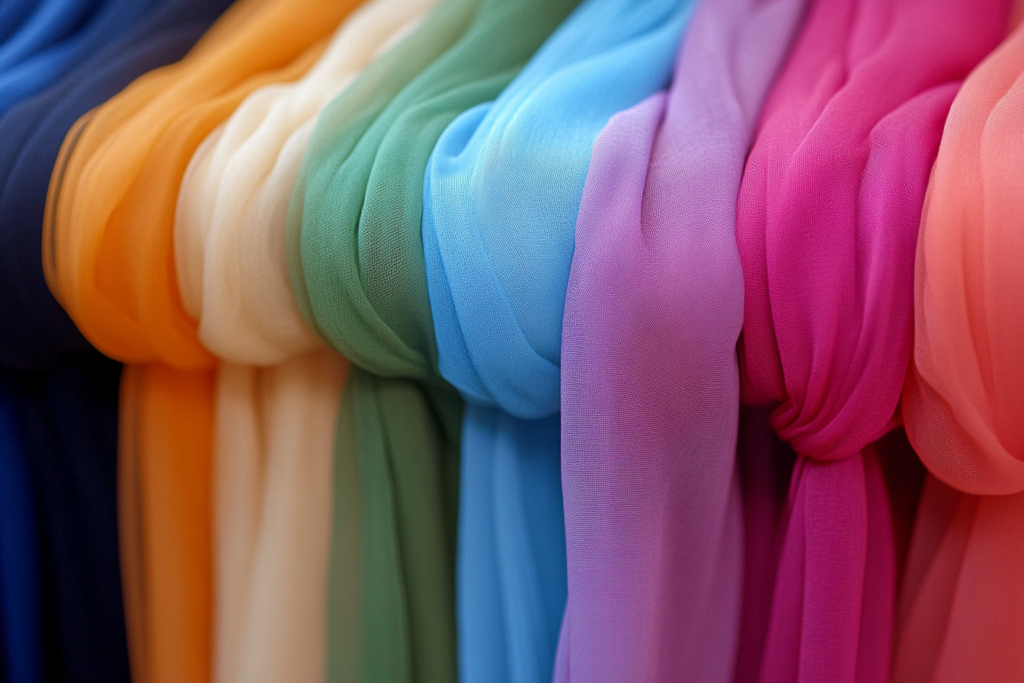
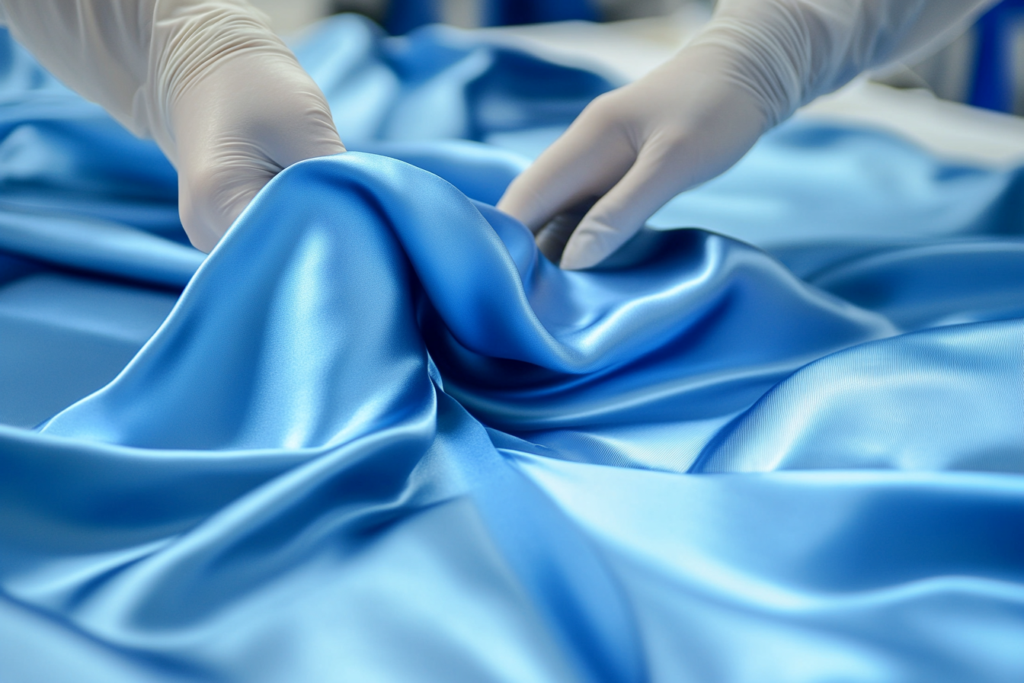
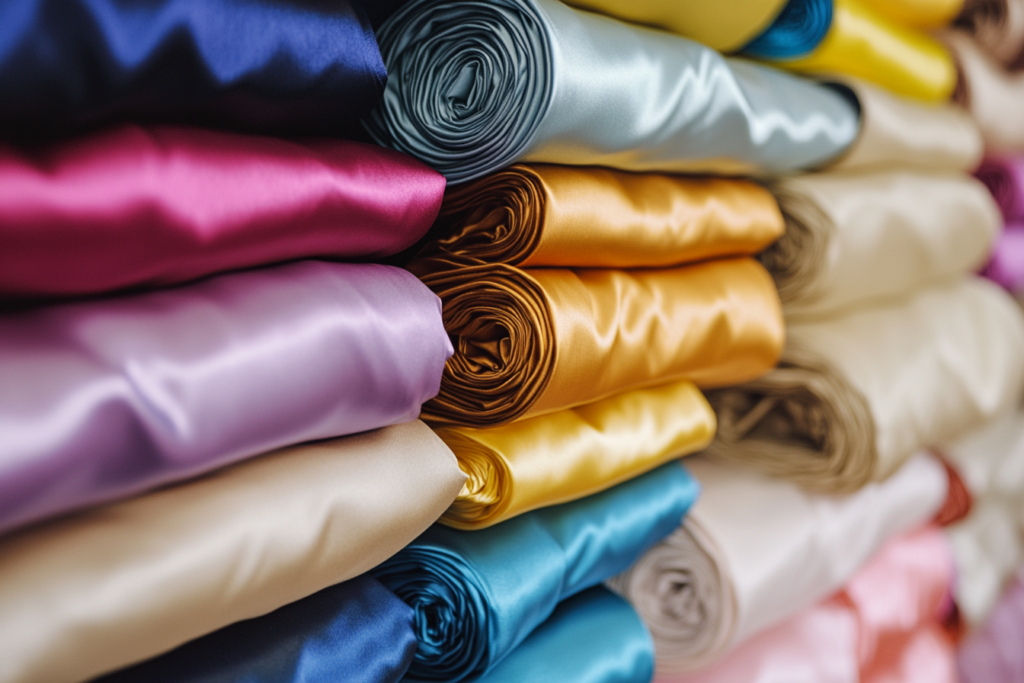
- Cashmere – A luxurious, soft, and lightweight wool made from the undercoat of goats.
- Chiffon – A lightweight, sheer fabric often used for evening gowns, scarves, and blouses.
- Satin – A fabric with a glossy finish, often used in formal wear and lingerie.
- Taffeta – A crisp, smooth fabric with a slight sheen, commonly used for bridal gowns and evening dresses.
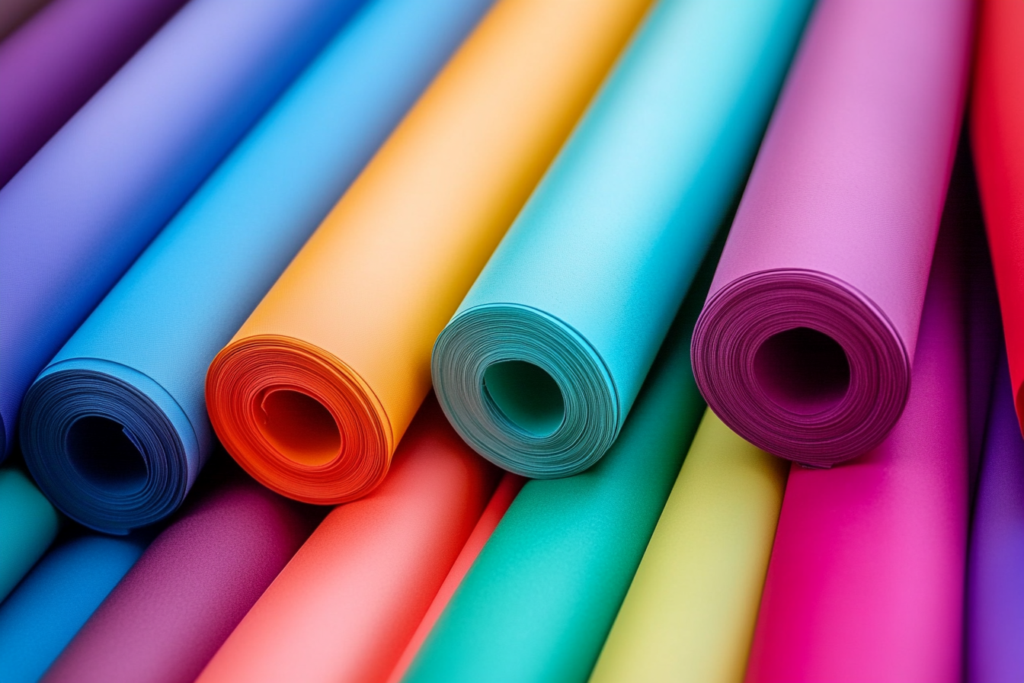

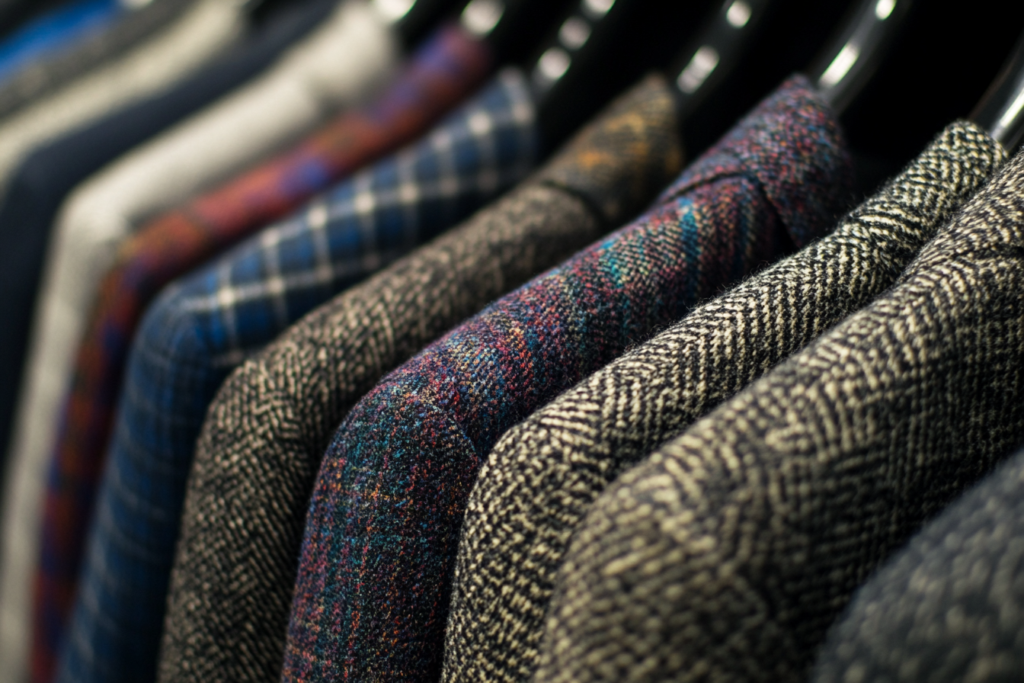

- Spandex/Lycra – A stretchy and flexible fabric often used in activewear and swimwear.
- Rayon – A semi-synthetic fiber made from wood pulp, offering a soft feel similar to silk.
- Tweed – A textured wool fabric, often used in jackets, skirts, and suits.
- Hemp – A sustainable, natural fiber used in eco-friendly clothing and accessories.
Fabric Material: Understanding Types, Uses & Properties
🧵 What is Fabric Material?
Fabric material refers to the textile base used to make clothing, upholstery, accessories, and more. It is formed by weaving, knitting, or bonding fibers—natural or synthetic—into a sheet of cloth. The choice of fabric significantly impacts the look, comfort, durability, and function of a garment.
🔍 Types of Fabric Materials
🌿 Natural Fibers
These come from plants or animals and are often breathable, biodegradable, and skin-friendly.
| Fiber Type | Source | Features | Common Uses |
|---|---|---|---|
| Cotton | Cotton plant | Soft, breathable, absorbent | T-shirts, shirts, denim |
| Linen | Flax plant | Light, crisp, moisture-wicking | Summer wear, suits |
| Silk | Silkworm | Smooth, luxurious, natural sheen | Dresses, scarves |
| Wool | Sheep | Warm, elastic, insulating | Coats, sweaters |
🧪 Synthetic Fibers
Man-made materials created through chemical processes. Known for strength, stretch, and resistance.
| Fiber Type | Properties | Common Uses |
|---|---|---|
| Polyester | Durable, wrinkle-resistant, cheap | Sportswear, outerwear |
| Nylon | Strong, lightweight, quick-drying | Lingerie, activewear |
| Acrylic | Warm like wool, lightweight | Sweaters, blankets |
| Spandex | Elastic, form-fitting | Leggings, swimwear |
🎯 How to Choose the Right Fabric
✔️ Consider the End Use
Activewear → Stretch & moisture-wicking (e.g., polyester blends)
Formalwear → Elegant drape (e.g., silk, crepe)
Casualwear → Comfort & breathability (e.g., cotton, rayon)
✔️ Understand Fabric Weight
Lightweight (e.g., chiffon, lawn): good for blouses, dresses
Medium-weight (e.g., denim, twill): used for pants, jackets
Heavyweight (e.g., wool, canvas): coats, upholstery
✔️ Fabric Finish & Feel
Choose between matte, glossy, brushed, or crisp depending on your garment style and feel.
🧶 Fabric Construction: Woven vs. Knitted
| Feature | Woven Fabrics | Knitted Fabrics |
|---|---|---|
| Structure | Interlaced warp and weft yarns | Interconnected looped yarns |
| Stretch | Less stretchy | Naturally stretchable |
| Use | Suits, shirts, trousers | T-shirts, sweaters, activewear |
🧼 Fabric Care Tips
🧺 Always read care labels – washing, drying, and ironing methods vary by material.
🚫 Avoid harsh detergents for delicate fabrics like silk or wool.
🌡️ Use appropriate water temperature for cotton and synthetics.
🎨 Popular Fabric Patterns
Plaids & Checks – Often made from yarn-dyed cotton
Florals – Printed on cotton, rayon, or polyester
Solid Colors – Classic and versatile across all fabric types
Stripes – Timeless on woven and knit materials
🧭 Sustainable Fabric Choices
Looking to go green? Choose:
Organic Cotton
Bamboo Fiber
Tencel / Lyocell
Recycled Polyester
These materials reduce water waste, chemicals, and textile pollution.
📌 Why Fabric Material Matters
The right fabric material influences the comfort, style, durability, and sustainability of a garment. Whether you’re a designer, retailer, or fashion enthusiast, understanding fabric properties helps make better decisions in clothing design and production.